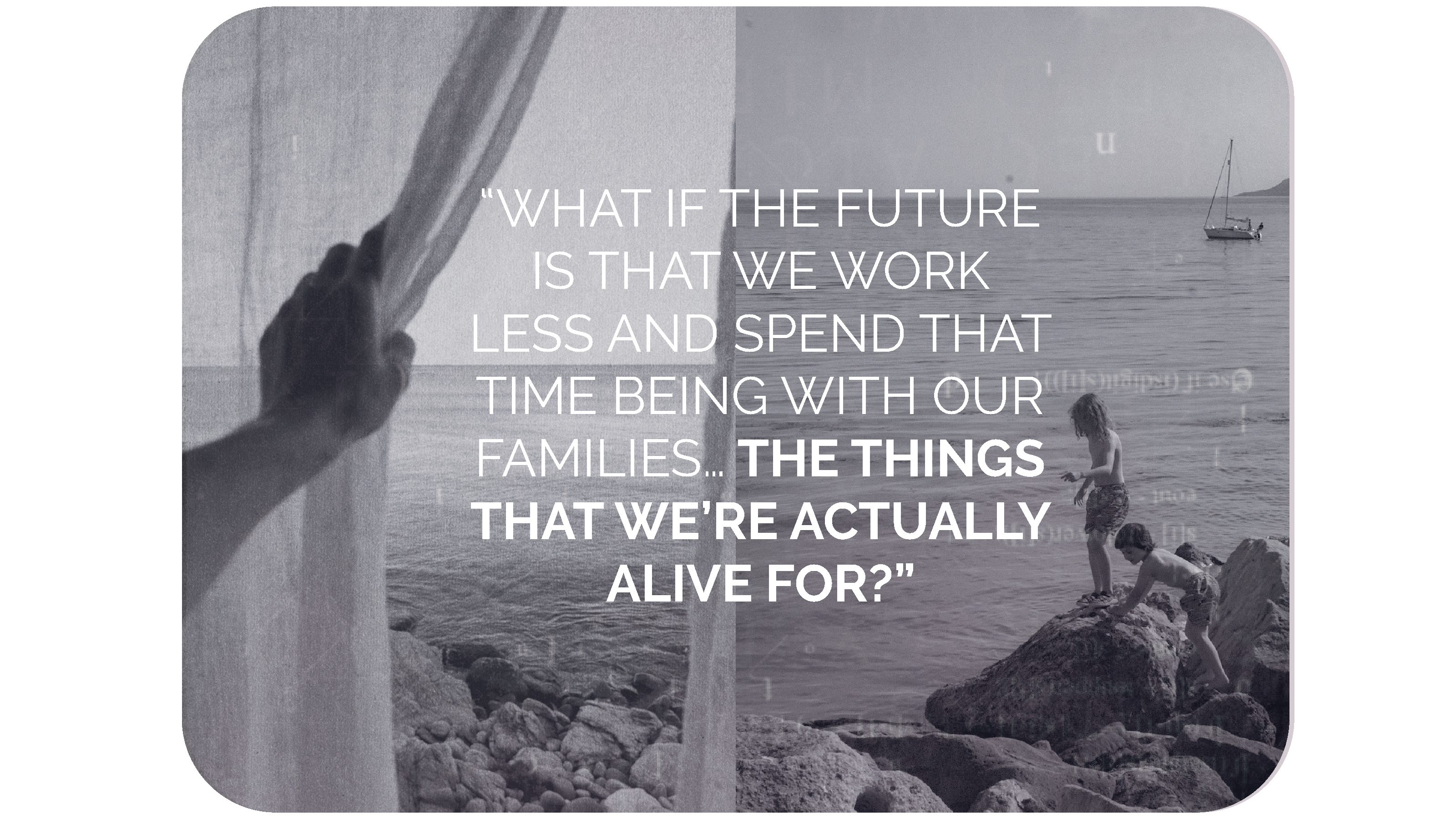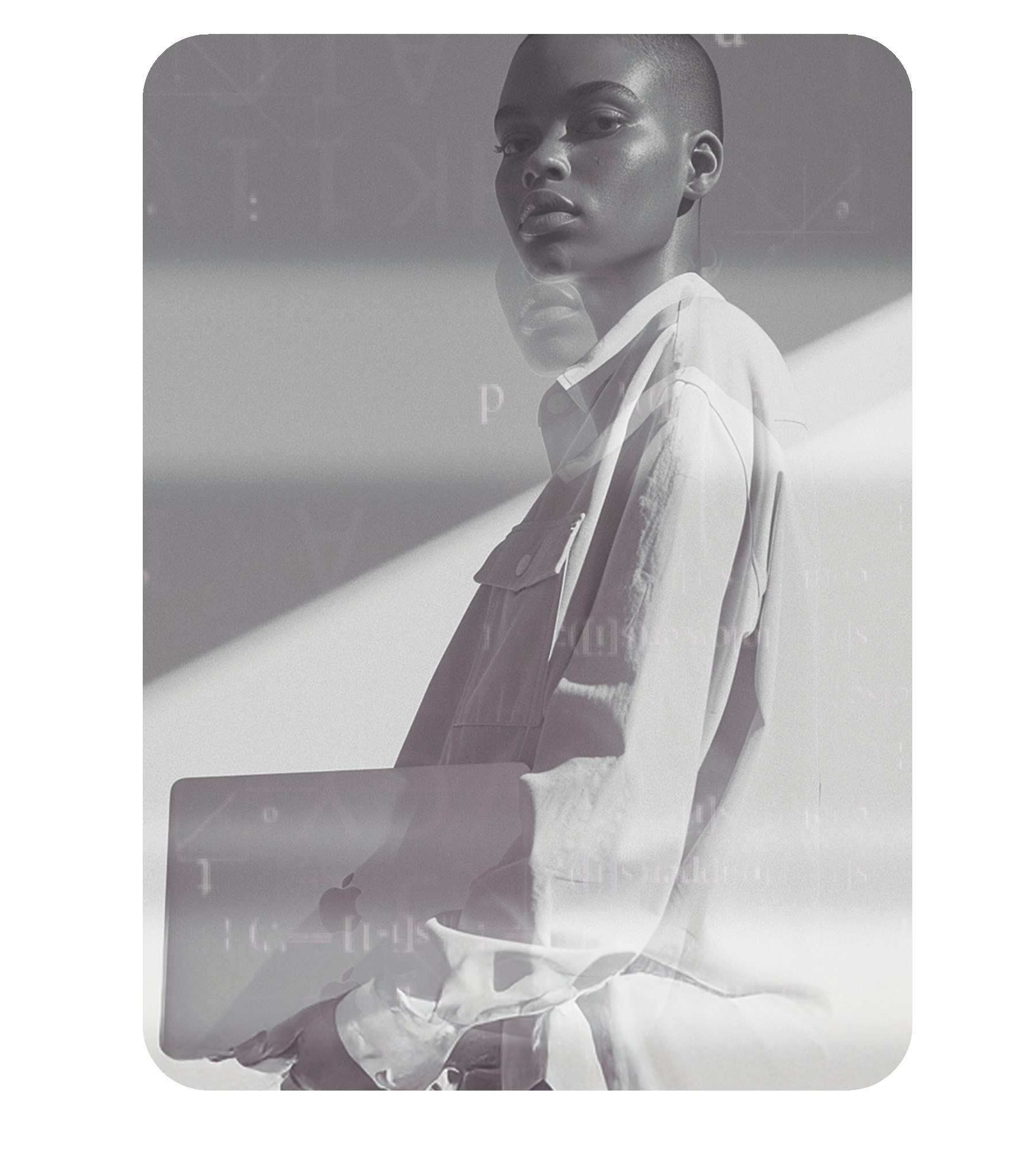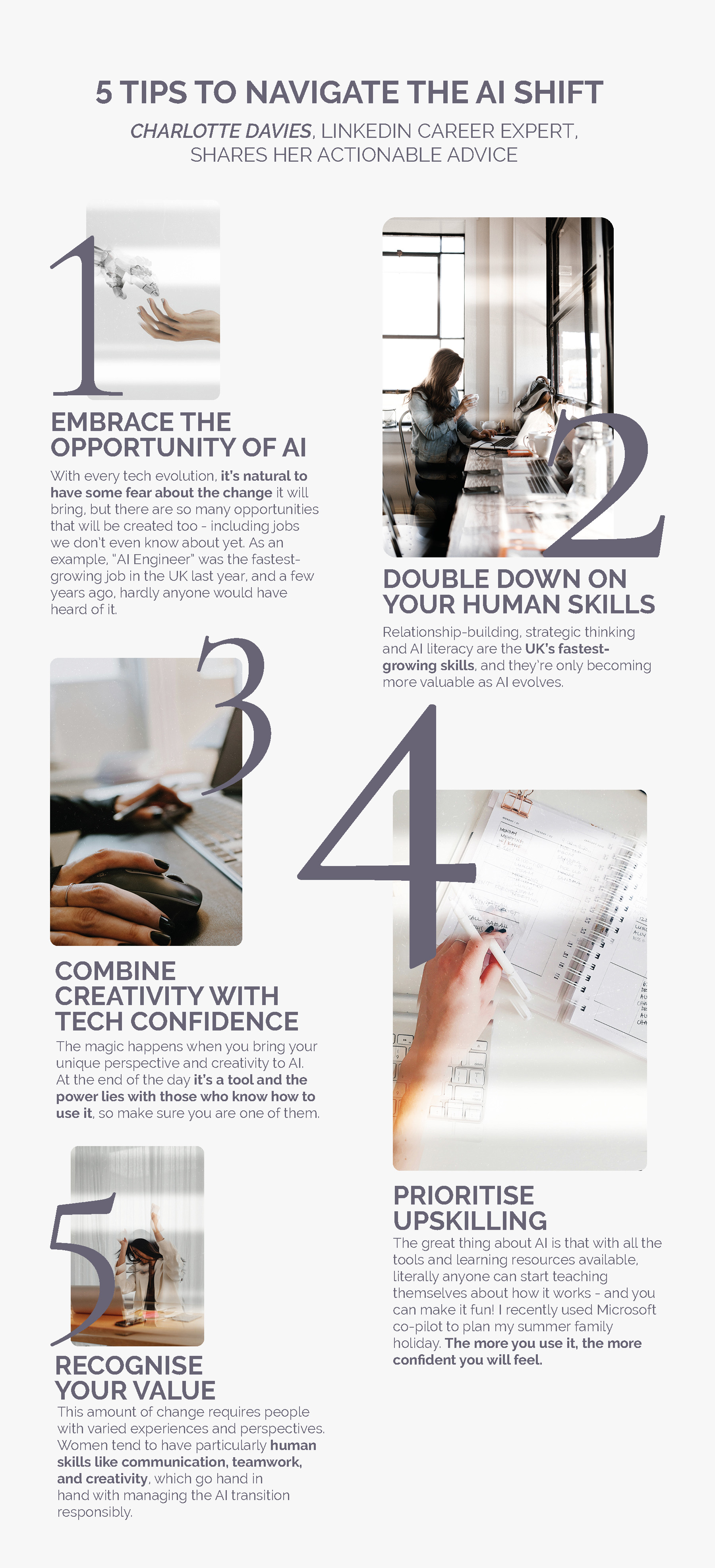Will AI Take My Job? For Many Women, It Already Has.
As AI takes over more routine tasks, women face both new opportunities and hidden risks in the workplace. How you respond now could shape your career.


“Job-seeking has never been the complete and utter silence I’m facing now,” writes Marissa Castrigno. Clearly, the sentiment – that AI and automation are turning job-hunting into even more of a hellscape – resonates: the LinkedIn post has racked up hundreds of likes and countless comments. Elsewhere, Google searches for “Will AI take my job” are up 212%, and there are 58.9 million posts under the TikTok search “People saying AI is gonna take my job.”
Castrigno’s argument is that we are in an automated employment loop in which AI is being used on both sides of the hiring process, resulting in a closed feedback cycle with scarily little human input that leaves us on the sidelines of a fully automated hiring charade. The theory tracks: in the UK, 61% of employers now use AI as part of their hiring process. What’s more, only 22% of AI and data professionals are women, raising concerns among hiring experts that women may be left behind in the AI boom. As Dr Ryne Sherman, chief science officer at employment performance tester Hogan Assessments puts it: “AI is rewriting the rules of work – but who’s holding the pen?”
Iris has been a full-time freelance journalist and copywriter for eight years, and says that 2025 has been her hardest yet. Editors who once sent regular assignments have vanished, several of whom have been laid off themselves. “It would be naive to blame AI alone – media has been in flux for at least a decade,” she says. “But it would be equally naive not to see the major role it has played in all this.” A friend lost her full-time copywriting job because her company replaced her with ChatGPT. “They told her this,” Iris adds.

Hiring experts worry that an AI gender bias may leave women behind.
Marissa and Iris are far from alone. A survey by Orgvue found that 39% of UK organisations had made redundancies due to AI deployment. If you want to indulge in a little schadenfreude, more than half now consider those decisions to have been misguided. But before you take too much reassurance from that fact, the Tony Blair Institute for Global Change estimates that AI could displace one to three million UK jobs over the long-term, with peak annual losses of 60,000 to 275,000 positions.
In January, Tatiana Teppoeva – a PhD who holds a US patent in predictive AI – was laid off after 14 years at Microsoft. “It felt ironic and almost funny,’ she says, ‘because the very tools and systems I had helped to build were part of what reshaped the workforce.”
Wanjiku Kamau experienced something similar at Google. After her redundancy, she noticed every posting required some form of AI training. “I laughed at myself: here I am, working in Google Cloud, and I’d barely engaged with AI.” Many of us can likely relate. The concept of artificial intelligence has been mainstream since at least Spielberg’s A.I. Artificial Intelligence in 2001, but the pace of change in the last three years, particularly with OpenAI’s tools, has been dizzying.
When OpenAI launched ChatGPT on November 30, 2022, it reached a million users in five days. Today, weekly active users are around 700 million – four times last year’s number. Five million of those are paying business users, and that’s just one platform. In the US alone, over 60% of Fortune 500 companies use at least one AI platform – and the number of platforms continues to grow, with – at the time of writing – an estimated 70,000 platforms globally and more than 10,000 distinct AI tools.

Women face a higher risk of Gen AI-related job disruption than men.
A new joint study from the International Labour Organization and Poland’s National Research Institute found that, worldwide, one in four jobs are potentially under threat from generative AI. And women, as so often seems to be the case, are estimated to likely be hit the hardest. Worldwide, 4.7% of women’s jobs fall into the highest-risk category, compared to 2.4% for men. In high-income countries, this gap widens significantly, with 9.6% of women’s jobs at risk – nearly three times the share of men’s.
Is AI Ignoring Women?
The reasons women’s careers are at higher risk from AI are complex, but experts agree on a few common patterns. Women are overrepresented in clerical and administrative roles – which often involve repetitive tasks that AI can already perform efficiently. While these roles may not vanish entirely, partial automation could reduce job quality, stripping responsibility, stagnating wages and increasing insecurity.
At the same time, women and girls remain underrepresented in the creation, deployment and regulation of technology. We are less likely to pursue tech careers or use digital services – and disproportionately more likely to experience online harassment. Gender imbalances in AI leadership exacerbate these problems: research from Cloudera, a platform for managing big data and AI, found that 68% of UK-based female IT decision-makers worry about the lack of women in senior AI positions, and over half believe this contributes to biased AI outputs – especially as AI leadership remains overwhelmingly male.
Bias is already visible in practice. One US analysis of 133 AI systems revealed a 44% gender bias against women. Tamsin Deasey-Weinstein, an AI thought leader and workforce strategist, illustrated this when she asked an AI to define “success” in England; it returned an image of a 40-year-old man in a business suit. She tested it further with a photo of her own family – a same-sex couple with two children – and found the AI consistently rendered her as a man. “It didn’t matter how many times I put it in,” she says over Zoom. “I was the male because I’ve got short hair.”
Despite these biases, Deasey-Weinstein is an AI optimist. Based in the Cayman Islands, she leveraged her early adoption of the technology into a senior role advising the country’s Premier and sees AI as a potential equaliser: “It’s tech that’s not really tech,” she says. “You don’t need technical skills. It’s democratising, and it’s more of an art.”
Exciting Opportunities Amidst the Risk
Deasey-Weinstein isn’t alone, LinkedIn’s UK Workforce Confidence Index shows that many workers see AI not as a threat but as a tool for empowerment. Over half (53%) believe AI will relieve them of mundane tasks, freeing them to focus on higher-value, creative, or strategic work; 41% say it already helps them complete tasks faster and boosts productivity.

AI optimists say we could be headed towards a tech utopia
Deasey-Weinstein is optimistic: “Let’s say AI does take away a load of our jobs, or a proportion of them, and we’re only needed to work a day or two a week. What if that’s how we’re actually meant to be? What if the future is that we work less and we spend that time being with our families, getting back to nature, upskilling – the things that we’re actually alive for?” It’s an intoxicating idea – that technology might finally free us from the daily drudgery of “bullshit jobs” – the term coined by anthropologist David Graeber to describe meaningless or unfulfilling work that even those doing it don’t believe should exist.
Some women are already experiencing this shift. Kamau describes how embracing generative AI tools accelerated her career transformation. “It would’ve taken me weeks to ramp,” she says. “It took me hours because I started using these tools.” Her AI journey, from apprentice to excelling, inspired her book, Out of the Loop, Into the Algorithm: How I Finally Made Friends with AI, which she hopes will help others adapt to rapid technological change.
Khyati Sundaram, an AI and recruitment expert, echoes Kamau’s optimism: “AI should be used to automate repetitive tasks whilst supporting workers to transition into more meaningful, higher-value work,” she explains.
Perhaps. But the picture is far from entirely rosy. For women who are already established in their careers, shedding tedious tasks may bring welcome relief. For newcomers, whose roles often involve routine, easily automated work, AI could jeopardise the crucial entry-level experience that builds skills and career pathways.
Castrigno, for one, worries about the growing need to interact with AI. “I'm 10 years into my career, I have a master's degree in fine art and I'm about to spend the next 30 years duking it out with clankers to stay alive,” she says. “The more AI we have to interface with, the worse our experience is going to be: as candidate and recruiter, doctor and patient, driver and passenger – all of it.”

Imme Ermgassen, co-founder of Botivo, warns of what she calls a “cultural emergency” in hospitality. As robotics expand into front-of-house roles – from automatic check-ins in hotels to robots waiting tables – the immediate effect is the disappearance of entry-level opportunities. “It feels like a way for hospitality to replace the junior end of jobs versus the stuff at the top,” she says. Beyond job losses, the impact runs deeper: “For many people, hospitality is the first job after university where they gain the life skills needed to move on. If those jobs aren’t there, a whole generation won’t get that first step into the real world.” And with barely any women remaining in hospitality long-term, she explains, automation risks deepening inequality by removing the very roles that offer women and young people their first foothold in work.
The Decline of Human Connection in the Name of Efficiency
There are other risks in increasing automation. Self-checkouts and virtual doctor’s appointments might be convenient, but they quietly cut out human contact. For women in abusive or controlling relationships, casual face-to-face interactions with cashiers, receptionists, or healthcare providers may be rare opportunities to seek help or signal distress. When these points of contact disappear, so do the chances to be seen and supported. AI has the potential to isolate those who most need human connection, all in the name of efficiency. As Castrigno puts it: “It’s created a firewall of human connection.”
AI 2027, a forward-looking project led by Daniel Kokotajlo – a former OpenAI researcher who left the company over concerns it was acting recklessly – and AI researcher Eli Lifland (who accurately predicted the rapid spread of COVID-19), explores what the world could look like as AI becomes increasingly powerful. Through two contrasting visions – one optimistic, one cautionary – the project examines how quickly AI might surpass human intelligence and what societal consequences could follow if development is rushed or poorly managed. Key warnings include loss of control, competitive pressures and broad social disruption.

AI 2027 explores how rapidly advancing AI could reshape humanity, from hopeful innovation to the risk of losing control altogether.
“As AI and social media grip us, people are hungry for real-life communities,” explains Ermgassen. “When hospitality spaces erode, society becomes fragmented. People from different backgrounds or with different opinions might not meet anymore, contributing to polarisation in an already polarised time.”
The impact is not just social – it’s professional. Hayley Dawson, the founder-director of Let’s Talk Human Skills, highlights an urgent, gendered concern: as automation takes over routine tasks, the human skills that remain – direct communication, self-promotion and visible leadership among them – become ever more critical for career advancement. Yet women are often penalised for displaying these behaviours, being labelled “bossy” or “aggressive.” In automated workplaces, where there is less “busy work” to hide behind, these interactions are scrutinised more closely, creating a near-impossible catch-22, she says.
The rise of AI presents both challenges and opportunities for women in the workplace. Research confirms a worrying gender gap, with one recently published report revealing that 81.3% of men use AI tools at work, compared with just 58.8% of women. Similarly, women are less likely than men to work in generative AI-augmented roles.
Dawson warns that “getting women to adopt AI at equal rates is the main way to ensure equitable benefit”, emphasising that unequal uptake risks leaving women behind in the next wave of career opportunities, promotions and influence.
Upskilling for the AI Era
At the same time, AI could be a powerful tool for career acceleration. Women with varied, non-linear career paths are uniquely positioned to thrive in the AI economy. According to the Global Gender Gap Report, these experiences equip women with the skills to navigate AI-powered workplaces, potentially unlocking £400 billion in productive capacity in the UK alone – equivalent to 16% of 2023 GDP.
Deasey-Weinstein sums it up: “Maybe in the future, everybody needs to show that they’re continuously learning to be relevant in a world of AI and innovation and everything that’s coming up.” However, the rapid obsolescence of skills remains a persistent challenge. Deasey-Weinstein notes, “The skills that I got at 40 aren’t relevant now five years later. The skills I had at 42 aren’t relevant now because the world is changing so fast.”
LinkedIn data reinforces this, showing that AI literacy is among the most in-demand skills, yet only 41% of employees report that their companies provide adequate training. According to Tamara Basic Vasiljev, head economist at LinkedIn EMEA, “UK professionals are facing a highly competitive job market… The ability to work with AI agents is the fastest-growing skill in 2025, while demand for collaboration, communication and other human skills is also rising.”
Teppoeva points out that “machines are great at spotting patterns in numbers. But they don’t feel the meaning behind a pause in a meeting, the tension in a clenched jaw, or the warmth in a genuine laugh.” These interpersonal and relational skills are critical for leadership and career progression, and may become even more valuable as routine tasks are automated.

Tatiana Teppoeva warns that while AI spots patterns, human skills like reading emotions and building relationships remain essential, and will only grow in value as automation rises.
AI also holds the potential to address longstanding gender inequities in work-life balance. Ermgassen hopes that AI could reduce pressures from long hours, allowing for more flexible work and time for family responsibilities, in which case, “maybe there’s a future where AI supports women staying in hospitality longer”. Deasey-Weinstein echoes this, highlighting how an increased involvement of women in AI could help shape the technology itself. “The more women work with AI, the more women create data, the more women do research on AI, the more they skew it towards their needs, it will create that equity,” she says.
The AI era is a double-edged sword for women: unequal access and uptake could deepen existing inequalities, yet the same technology offers unprecedented chances to accelerate learning, amplify human skills and design more flexible, meaningful work. The unknowns still outweigh the knowns, but one thing is certain – AI is redefining the rules of work. Women who embrace it, shape it and teach it will determine how those rules serve us all. In the end, the story of AI in the workplace will also be the story of how women claim their place within it.



Mischa Anouk Smith is the News and Features Editor of Marie Claire UK.
From personal essays to purpose-driven stories, reported studies, and interviews with celebrities like Rosie Huntington-Whiteley and designers including Dries Van Noten, Mischa has been featured in publications such as Refinery29, Stylist and Dazed. Her work explores what it means to be a woman today and sits at the intersection of culture and style. In the spirit of eclecticism, she has also written about NFTs, mental health and the rise of AI bands.